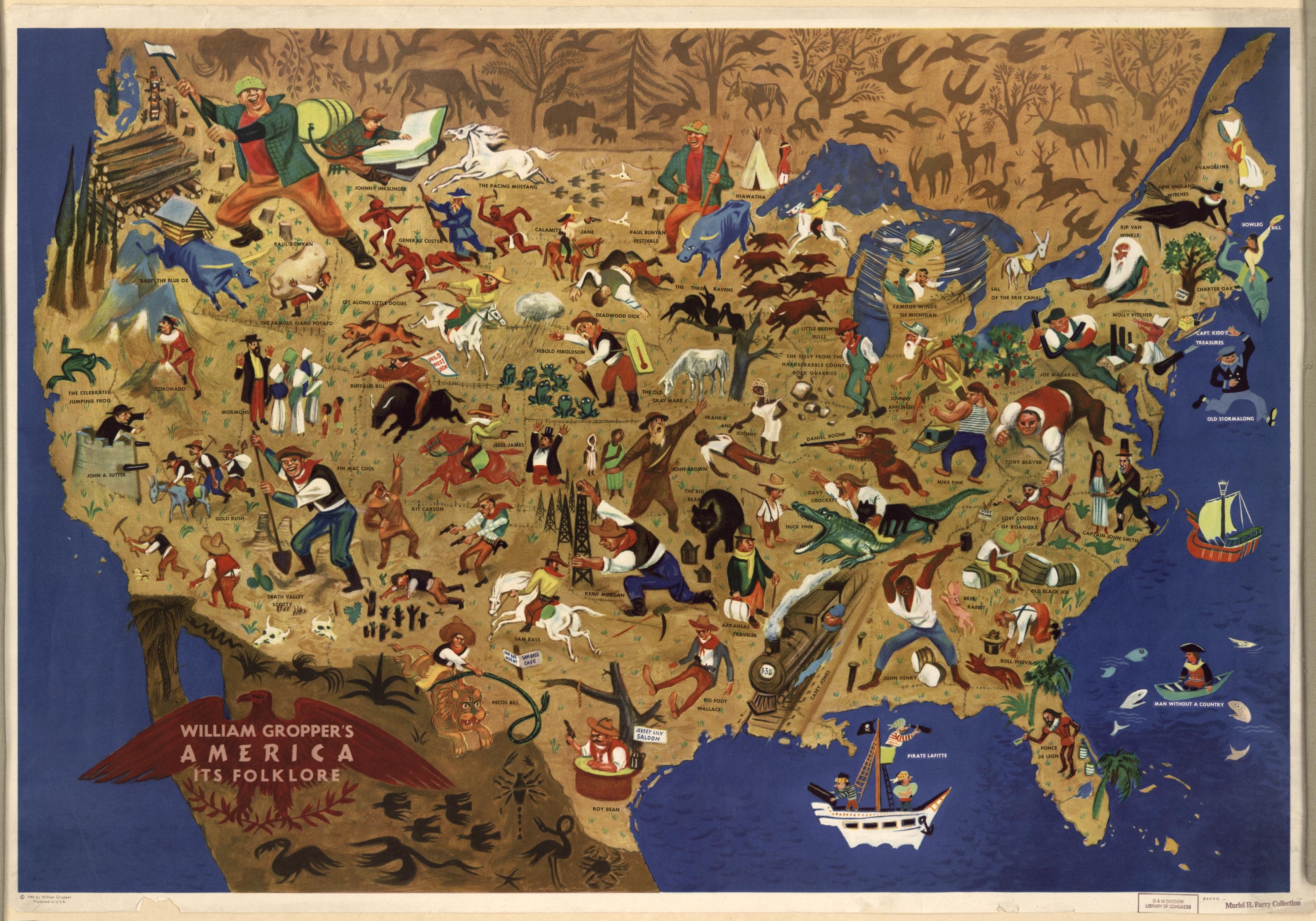In my last article, I spoke about the importance of questioning “truth” within a primary source document – acknowledging the conflicts of interests or the stakes that might subsist across a series of texts. This time, I am going to ask us to do the opposite. I am going to ask us to suspend our disbelief and hold belief for a moment in something that is so clearly untrue.
Throughout American history, there are many stories that we have collectively come to accept. These stories are undeniably embellished, often contain impossible feats, yet they are told time and time again. Like fairy tales, they teach us lessons about the manner in which our country has grown and the values that we ought to adopt. The stories I refer to, of course, are matters of American Folklore.
As seen in the map above, created in 1946 by William Gropper, each state and region has their own piece of folklore that they defensively cling to. In each of these tales, there is frequently something larger than life enraptures all who hear it - adults and children alike! Take this literally, for example, with the tale of Paul Bunyan.
Paul Bunyan is known today as a giant of a man, standing at inhuman proportions. His legend is claimed by several states, all dependent on the take that is being told about him. With his lumberjack’s axe and his trusty companion, a blue ox named Babe, he traveled from the pine forests of Wisconsin all the way to the western coast. Along the way, his footsteps created the 10,000 lakes of Minnesota, his axe carved open the grand canyon, and his cousin, Big Joe, notably was mistaken for the volcanic eruption of Mt. Lassen when he was cooking with a bean kettle. His stories are filled with feats that help explain the natural geography and topography of the American landscape, only made accomplishable thanks to his enormous size.
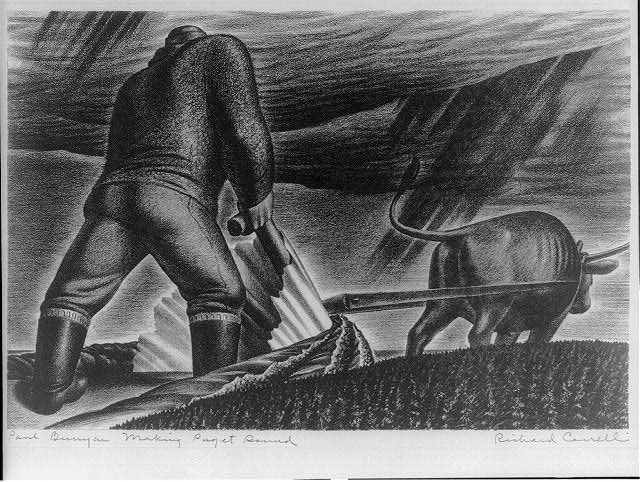
Correll, Richard V., Artist. Paul Bunyan making Puget Sound. [193] Photograph. Retrieved from the Library of Congress, <www.loc.gov/item/2003662407/>.
However, interestingly, these “tall” tales regarding the life of Bunyan are just the most recent aspects of his mythology. As noted by the American Folk Lore: Paul Bunyan Tales, collected for the University of Wisconsin in 1922, Paul Bunyan used to be a fairly average guy. Standing at seven feet tall, this person is unlikely, but not inherently impossible. Perhaps the thing that seemed most impossible about him was his appetite - an truly insatiable beast on account of all the hard labor that he did.
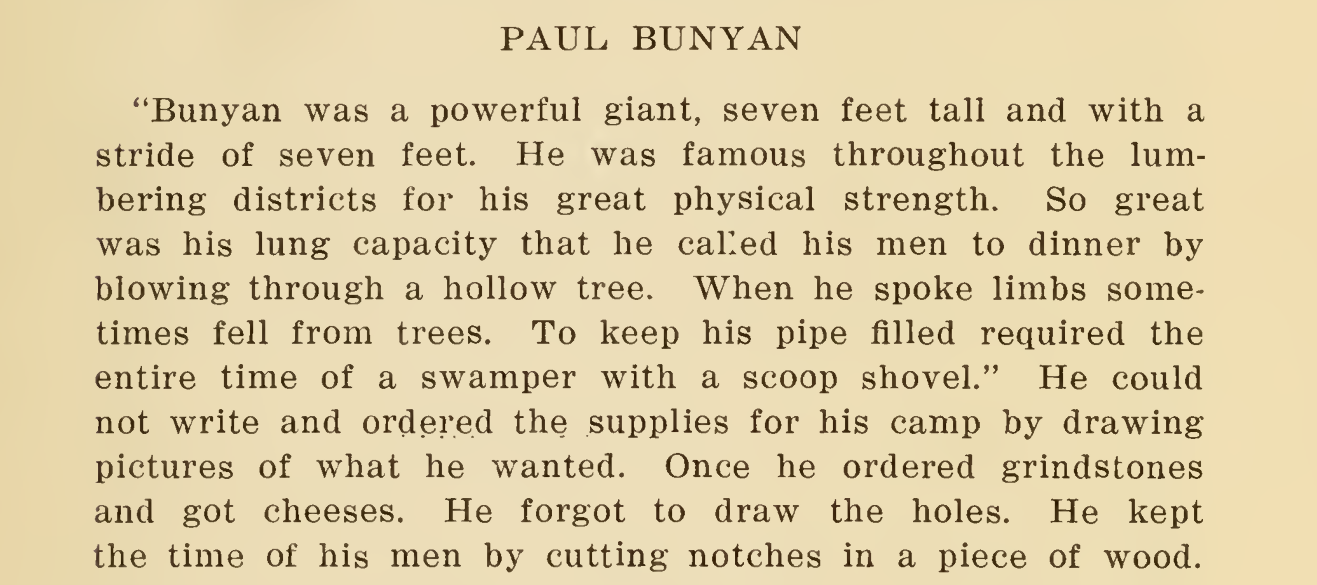 Brown, Charles E. Paul Bunyan Tales. [N.P, 1922] Pdf. Retrieved from the Library of Congress, <www.loc.gov/item/unk82080076/>.
Brown, Charles E. Paul Bunyan Tales. [N.P, 1922] Pdf. Retrieved from the Library of Congress, <www.loc.gov/item/unk82080076/>.
However, as time passed, Bunyan’s stature grew taller and taller. Later accounts mark him standing at full height around eight feet. By the 1930s, Paul Bunyan's stature was as tall as mountains, his strides able to cross entire states at a time. The exploits of Paul Bunyan’s life were full of feats of strength that relied on his sense of determination, perseverance, and grit. He became far less of a figure that could reasonably exist, and instead embodied a value that could reasonably exist. His desire to bring that hard work westward was also reflective of the time among the lumberjack camps and the loggers that moved westward as a result of Manifest Destiny. This exact idea can be examined by looking at the map by Gropper - Paul Bunyan is the only character that is represented on this map twice. In the Midwest, he is a big man with several cut stumps surrounding him. By the time he reaches Washington, however, he is positively massive, a stack of lumber the size of the state itself at his feet.
This very idea of folklore being representative as value can be discovered in nearly every folk tale in American history. Take the heroes of Daniel Boone and Johnny Appleseed, for instance. Both were real, documented American citizens. Daniel Boone was a pioneer who carved his way through the wilderness, forging paths that few colonists had ever before traveled. Thanks to his efforts, thousands of people began to make their way westward into the American frontier. Appleseed, born Johnathon Chapman, followed his footsteps and aided in making that land more habitable in the nursing of fruit trees from the East well into the Midwest. Today, these names are household. Due to the high value that Americans of their era placed on their work, their names were carried down into the next generation and sent forward in perpituity.
-
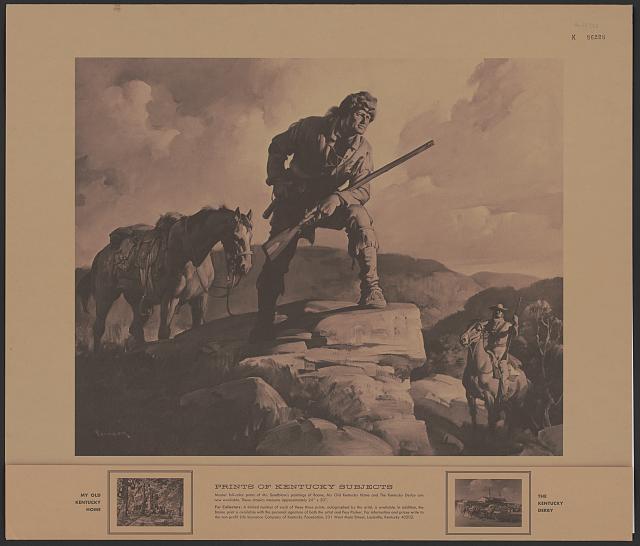 Daniel Boone at Cumberland Gap. [Kentucky: publisher not transcribed] Photograph. Retrieved from the Library of Congress, <www.loc.gov/item/2018697047/>.
Daniel Boone at Cumberland Gap. [Kentucky: publisher not transcribed] Photograph. Retrieved from the Library of Congress, <www.loc.gov/item/2018697047/>.
-
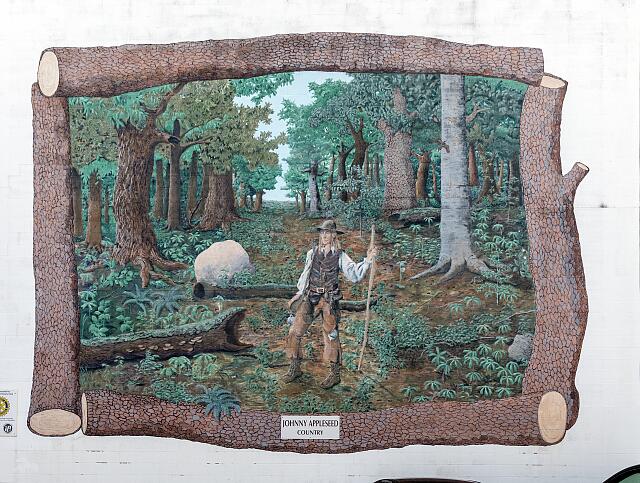
Highsmith, Carol M, photographer. A mural saluting the actual, and especially folklore, figure Johnny Appleseed in downtown Mansfield, Ohio. -10-07. Photograph. Retrieved from the Library of Congress, <www.loc.gov/item/2016632411/>.
However, there is an incredible diversity in these figures of folklore as well, which makes sense when one considers the diversity of values in American society. A notable figure of folklore in the American south, specifically among the Black community was the figure of "High John the Conqueror" or sometimes "Old John." Zora Neale Hurston helped bring this man of legend to the public eye through her composition, Polk County. In some retellings, Old John is a prince from Africa who comes to assist his people in their time of need. He is resistant against the slave owners of the southern plantations, playing tricks on them or helping others evade their ire. He could perform inhuman acts that allowed him to get his way out of any situation, or as Hurston writes, "make a way out of no-way." There are similar figures from African American folklore, such as Br'er Rabbit, who relies on his wit rather than his strength to overcome difficulty.
The fact that these legends persist today is no accident. Each of them came at a time when they answered a problem that Americans faced. How will you survive the harsh northern timberland? Work hard, roll up your sleeves, and eat until you can't anymore. How will you provide a better life for your family? Forge ahead, conquer nature, and sow the seeds for a better future. How will you find a future of liberty? Trust in your heritage, keep your wits, and persistently seek your freedom from those who seek to take it from you.
When examining primary sources, it's important to look at the aspects of these characters which are, most certainly, false. It allows us to ask question like:
- Why were these traits ascribed to these figures?
- Why did these figures persist through history over others?
- What are the primary forces that these figures work against in their journey?
- What gives these figures the strength that they need to succeed in their endeavors?
I am very interested to see what figures of our present day will become the folklore of the future. Which people that are alive today most embody the values that our living generations desire most? What fictional characters, if any, will emerge from this time period as icons of the 21st century? I can't say, but I can say for certain that it helps to look at the past. It helps to see what our ancestors valued, and when. In understanding the tall tales of Paul Bunyan, we can try to understand the harsh conditions of the north and the people that lived there. More importantly, we can try to understand who they wanted to be.
